
Part 03 - Union Street to Brown's Road
w/e 27 May 2018
All of this week's pictures were
taken with a Kodak DX6490
Information for this series has been sourced from
various places including the"Long Eaton Centenary Town Trail"
leaflet (CTT) and the"Long Eaton Townscape Heritage Initiative"
booklet (THI).
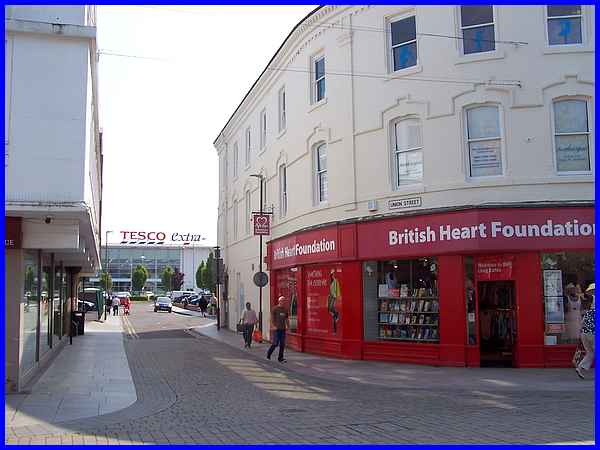
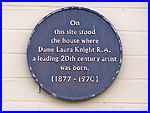 Part 03 of the
Town Walk begins in the Market Place at its junction with Union
Street, the building on the left hand corner occupying the former
site of a Methodist Chapel. The Tesco store across Waverley Street
at the far end of Union Street is further evidence of redevelopment
but the blue plaque on the British Heart Foundation shop marks
the site of the house* where the twentieth century artist, Dame
Laura Knight was born in 1877. The first female artist to be
made a Dame of the British Empire (1929) she was the first woman
to be elected as a full member of the Royal Academy (1935) and
died in 1970. Part 03 of the
Town Walk begins in the Market Place at its junction with Union
Street, the building on the left hand corner occupying the former
site of a Methodist Chapel. The Tesco store across Waverley Street
at the far end of Union Street is further evidence of redevelopment
but the blue plaque on the British Heart Foundation shop marks
the site of the house* where the twentieth century artist, Dame
Laura Knight was born in 1877. The first female artist to be
made a Dame of the British Empire (1929) she was the first woman
to be elected as a full member of the Royal Academy (1935) and
died in 1970.
*Note: Although the plaque marks the site of her birth, www.damelauraknight.com states that she was
born on August 4th 1877 at Acton Road which a little distance
from here.
|
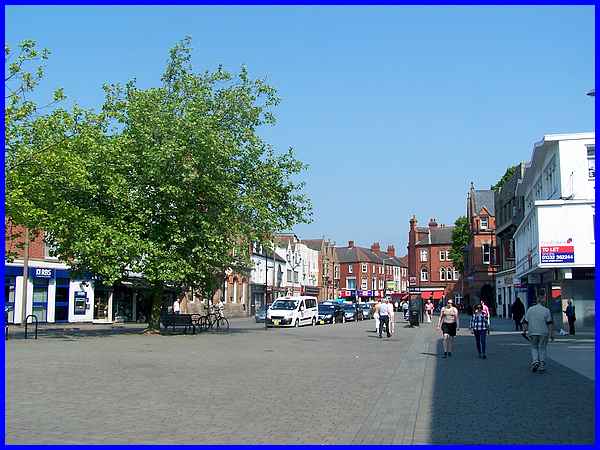
Our route now will take us into High Street but it is worth mentioning
here before we leave the Market Place that it was remodelled,
resurfaced and pedestrianised as part of the THI scheme. There
was a flood in 1932 and apparently there is another plaque on
the door of Yeoman's Army Stores showing the height of the water.
Unfortunately Yeoman's are no longer trading and shutters blanketing
the front of their former premises which were to the right of
this picture obscure the door.
|
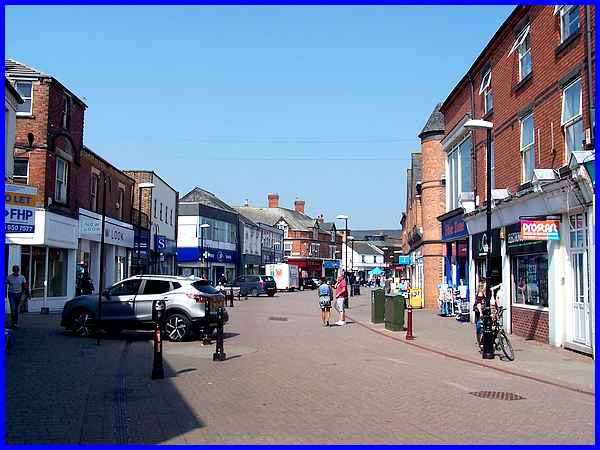
In this part of the walk we will continue along High Street as
far as the turreted building on the right which stands on the
corner of Brown's Road but the CTT leaflet states that there
are "many interesting original buildings" in High Street.
Some of those will become apparent in the next part but for now
let's return to the Market Place end of the street.
|
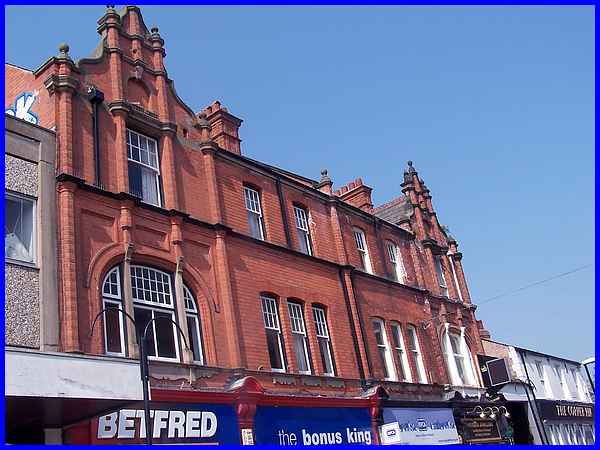
It's here we must look above the modern shop fronts to see the
splendid features of the Victorian architecture often sandwiched
between the more bland twentieth century buildings.
|
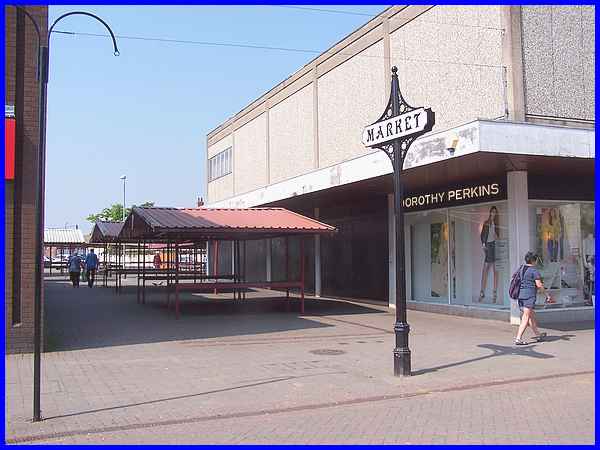
It's between some of those concrete and glass buildings that
traders for many years used the fixed market stalls. Those were
supposed to be dismantled a few years ago due to the cost of
repairing and maintaining them and although traders now spill
out onto High Street and the Market Place on market days leaving
the stalls largely unused, the old fixed stalls still remain
in situ.
|
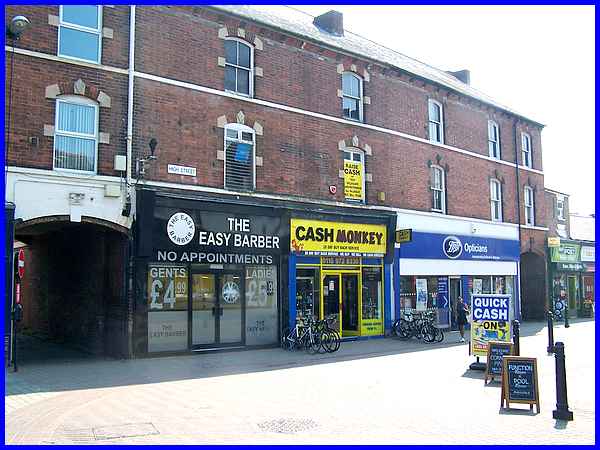
On the other side on High Street as we leave the Market Place
are two archways. These mark the entrances to early tenement
lace factories, the earliest lace factories in the town.
|
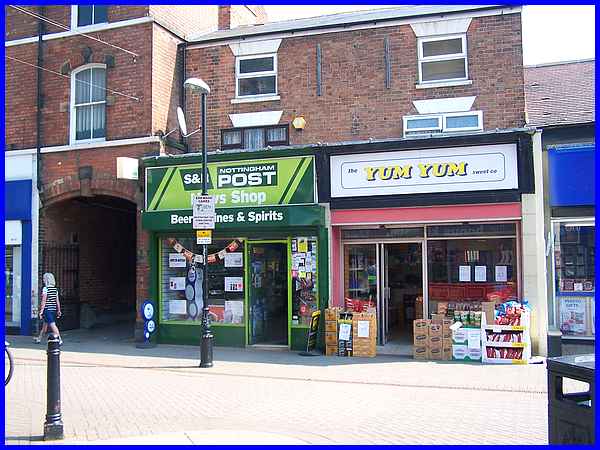
To the right of the second arch is the house now with the addition
of the shop frontage, of the Austin family who built that first
tenement lace factory.
|
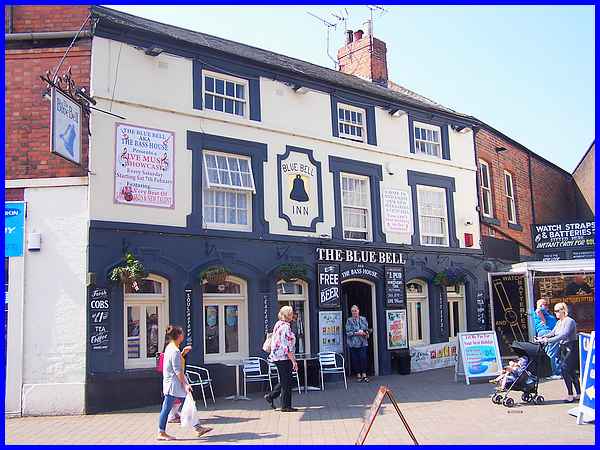
Back on the other side of the road and just a little further
along High Street is The Blue Bell, an eighteenth century pub
that advertises itself as being "modern and inviting"
that is " big on Northern Soul, Motown and Live Music."
|
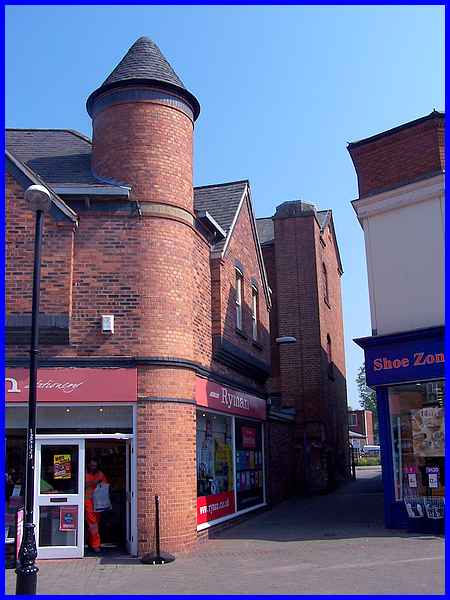
Whilst the old Blue Bell adopts a modern approach, the Ryman's
building on the corner of Brown's Road with its turreted design
only dates from the 1980s. It is behind the shop though that
we find High Street Mills.
|
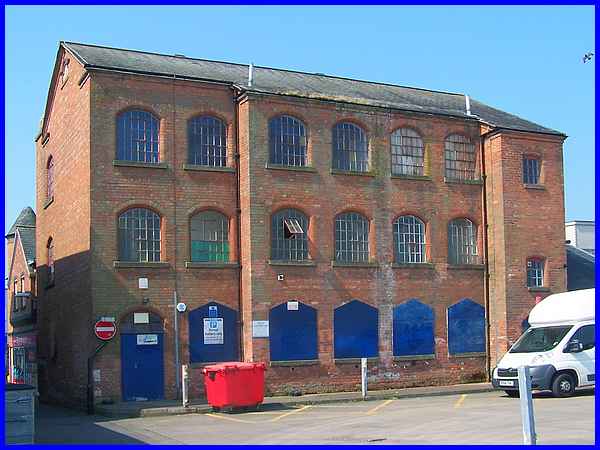
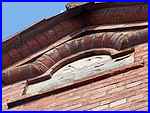 High Street Mills
is a lace factory that was built in 1857. A date stone set high
in the gable end is difficult to see (and photograph) from the
narrow alley that is Brown's Road and is easily missed by anyone
unaware of its presence. It was during the period 1840 to 1870
that Long Eaton developed from a small settlement of some 850
inhabitants to a town of 3,200 following the arrival of the railways.
The building of the wagon works and many lace factories like
this one changed the landscape for ever with over 60% of the
population being employed in the early days of those industries.
High Street Mills is now a Grade II listed building. High Street Mills
is a lace factory that was built in 1857. A date stone set high
in the gable end is difficult to see (and photograph) from the
narrow alley that is Brown's Road and is easily missed by anyone
unaware of its presence. It was during the period 1840 to 1870
that Long Eaton developed from a small settlement of some 850
inhabitants to a town of 3,200 following the arrival of the railways.
The building of the wagon works and many lace factories like
this one changed the landscape for ever with over 60% of the
population being employed in the early days of those industries.
High Street Mills is now a Grade II listed building.
|

